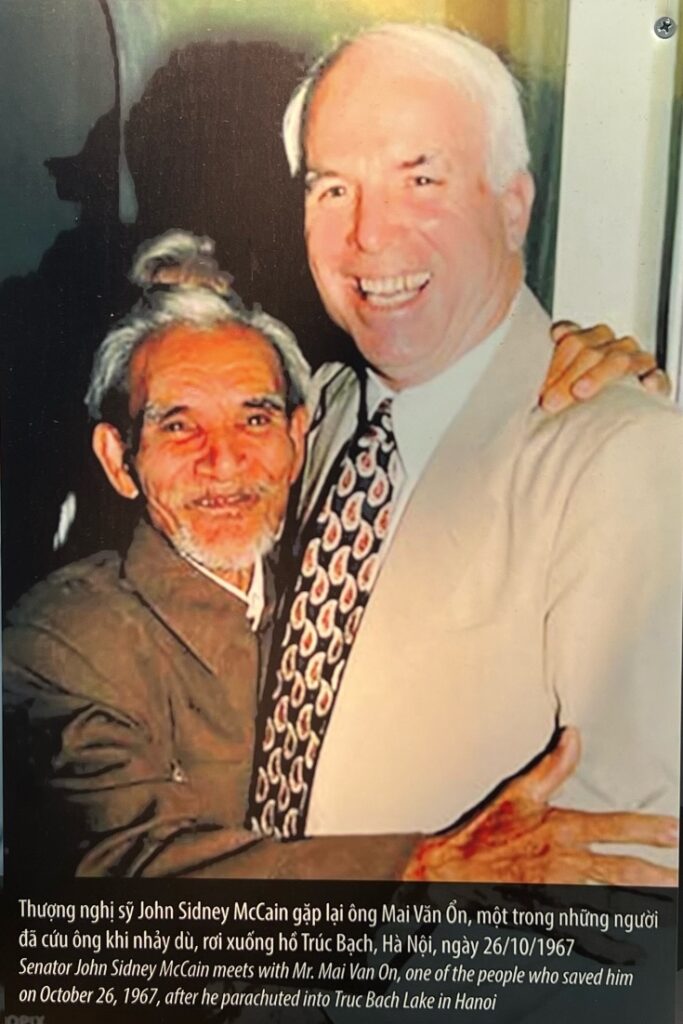Impact of Wars on Places We Visited
You don’t really understand the impact of war until you visit the place where the war was conducted. In our separate post titled “Why Travel?”, we explained that one of the main reasons we travel is to become better educated. We have lived on the earth for over seventy years. Yet, despite having lived through the 1960s and 1970s, we realized how little we knew about those years and other tumultuous times. This became quite apparent when we visited Southeast Asia and were confronted with the impact of the wars in both Vietnam and Cambodia. We were also personally moved by our visits to many other memorials of other wars.
Impact of the Vietnam War

At many of the cultural sites in Vietnam, the impact of war could be seen. This was particularly true in Hue where the Viet Cong had hidden in the Citadel. Also, we met people who had lived through the war and in some cases suffered from either war wounds or the after effects of exposure to Agent Orange or other toxic exposures.
But surprisingly, the people we met did not show resentment to people from the United States. In fact, despite the damage that was done to the country and to individual people, there was really a sense of genuine friendship. Perhaps time has healed the wounds of war that were so apparent when studying the history of the war.
We recently viewed the excellent Ken Burns PBS series on the Vietnam War. Ken brought home the true horror and how unnecessary this war was. It filled in the gaps we both had about power shifting and political dishonesty. It made it more obvious the true forgiveness of the Vietnam People.
Impact of Wars in Cambodia
However, the impacts of war are much more visible in Cambodia. Here, the Khmer rouge had virtually eliminated elder Cambodians. While there we met two individuals who had survived, Bou Meng and Chum Key. The men are now in their 80s and 90s. They had been tortured and spent time in captivity at the infamous prison S-21 in Phnom Penh. They lived because they had skills that the Khmer rouge liked. Bou Meng painted pictures of the Khmer Rouge leader Pol Pot. Chum Key was a mechanic who could fix machines.

Everyone we met in Cambodia had a story to tell about those years in the late 70s. A story we heard often was about their parents who were taken away and never seen again. One of our guides told us how he survived by growing up in a refugee camp.
Angelina Jolie recently released a movie “First They Killed MyFather: A Daughter of Cambodia Remembers”. The movie is a screen adaption of Loung Ung’s memoir of the same name. Using local actors and even her adopted Cambodian son, Maddox Jolie-Pitt as an executive producer, the film was embraced to critial acclaim. In fact, RogerEbert.com named this film as the second best film of the year.
War Memorials
In so many of the places we visited there are incredible war memorials recalling the impact of wars. You can’t help but be moved by the impact of war when you visit a place like Pearl Harbor on Oahu in Hawaii, Civil War sites throughout the United States (such as Gettysburg), Omaha and Utah Beaches in France, or the Korean and Vietnam Memorials in Washington, DC. The Arlington National Cemetary, the National Memorial Cemetary of the Pacific, also called the “Punchbowl” or the Normandy American Cemetery and Memorial will all bring a tear to your eye.

War Memorials in New Zealand and Australia
But what made us very curious as we traveled around the world were the war memorials in New Zealand and Australia, particularly those dedicated to WWI. In fact, we found only WWI memorials in New Zealand which got us asking, why? Also, why WWI? It wasn’t fought in the Pacific. Well, we got answers to both our questions, clearly demonstrating our lack of historic knowledge.
Impact of Wars – Why WWI? Answer: Great Britain
Recalling our lack of historic WWI knowledge, we were reminded that Great Britain was still in control of New Zealand and Australia at the time of WWI. As a result, people in both countries were ordered to support the mother country in their war in Europe.
The Te Papa Tongarewa Museum in Wellington is the National Museum of New Zealand. It contains a major WWI exhibit. (Please see our Museums Post for much more information). We learned that many soldiers from both New Zealand and Australia died in a major WWI battle in Gallipoli, Turkey. The museum has great enactments of the fight and the difficult time the soldiers experienced while there.
In New Zealand Why Only WWI?

The real mystery for us was why were the memorials in New Zealand only for WWI? Well, we didn’t get our answer to that question until we got to Australia. We learned that Australia and not New Zealand was attacked by the Japanese in WWII. As a result, Australia was fully in WWII and has memorials to that effect, but New Zealand, now independent of Great Britain and Australia chose to sit it out. We didn’t sense any hard feelings in Australia about that decision, but our guide in Sydney, who was a historic war buff, clearly made us aware of the historic fact. He also pointed out the Australian WWII Memorial pictured to our left.

![(First They Killed My Father: A Daughter of Cambodia Remembers) [By: Ung, Loung] [Sep, 2001]](https://cosguide4travel.com/wp-content/uploads/2024/01/51QnEIlBMRL._SL500_.webp)